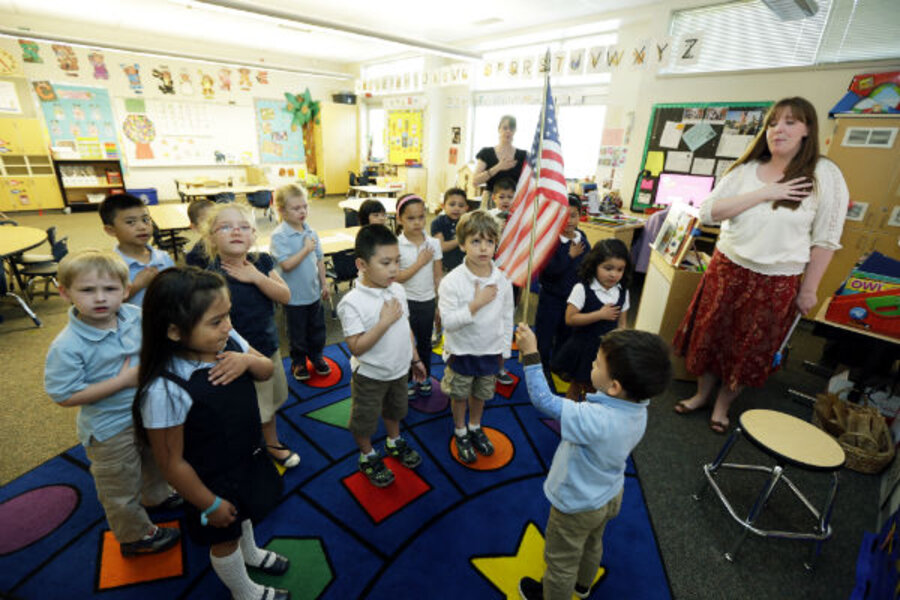Report: Availability of state-funded Pre-K varies across US
Loading...
The availability of state-funded pre-kindergarten programs varies widely from one part of the country to another, says a new report.
For example, more than 9 in 10 4-year-olds in the District of Columbia attended such a program during the 2012-13 school year, while 10 states have no such program.
A number of states had fairly high enrollments, according to the report released Tuesday, though slightly lower than the District. More than 7 out of 10 4-year-olds in Florida, Oklahoma, and Vermont were in such programs, while about 6 in 10 in Iowa, Georgia, West Virginia, and Wisconsin were enrolled.
In fact, even as lawmakers from both parties have embraced the idea of expanding early childhood programs, the number of children enrolled in state preschool programs saw a modest decline of about 9,200 children in the 20-2013 school year – the first such reduction since 2002, when researchers at Rutgers University started tracking pre-K trends. Even as funding increased from a year earlier, more than half of states with programs made cuts. California alone, for example, lost nearly 15,000 slots.
Overall, $5.4 billion was spent by states on pre-K funding for about 1.3 million preschoolers.
The report is from the National Institute for Early Education Research at Rutgers in collaboration with the Education Department's National Center for Education Statistics.
Given announcements of support by politicians for preschool, Steven Barnett, the director of the institute at Rutgers, said he expected more growth to be reflected in the findings, and yet, "the numbers aren't there."
"We were very surprised," Mr. Barnett said.
Education Secretary Arne Duncan said the data is a "reminder of how much work we still have to do to ensure that every child gets a running start."
President Barack Obama has advocated for universal preschool for America's 4-year-olds. He's found Democratic allies in the effort on Capitol Hill, but Republicans such as Rep. John Kline, R-Minn., the chairman of the House Education Committee, have said improving existing federally funded early childhood programs should be the priority.
Outside of Washington, governors from both parties have advocated for creating or expanding preschool. In Indiana, GOP Gov. Mike Pence, for example, signed into law in March a new pilot program for low-income children. In Connecticut, Gov. Dannel Malloy, a Democrat, recently successfully pushed through an expansion of about 1,000 preschool slots.
Those changes aren't reflected in the report's findings, nor are program expansions passed in New York that could have New York City alone add tens of thousands of children to state-funded preschool programs, possibly as soon as the fall.
Supporters say preschool programs help level the playing field for young children who enter kindergarten well behind their peers and never catch up, and members of the business community are among those advocates for preschool expansion. But the quality of such programs varies.
No states require preschoolers to attend school. Some states seek to offer it universally. Others base eligibility on family income. Under some setups, a community-based program receives public dollars. Other programs are within elementary schools.
While some states offer state-funded preschool to 3-year-olds, the programs are much more popular for 4-year-olds.
The District of Columbia serves about three-quarters of 3-year-olds. New Jersey and Vermont serve about 1 in 5 3-year-olds.
Public preschool programs can cost thousands of dollars per child annually. The District of Columbia – the highest spender – spent $14,690 per child in the 2012-13 school year, according to the report.
Barnett has said previously that about half of US children attend any kind of preschool program at ages 3 and 4, and for about a third of these children it is a publicly supported program.
A separate study by the Education Commission of the States finds that in the current fiscal year, 30 states and the District of Columbia increased appropriations for state-funded preschools.







